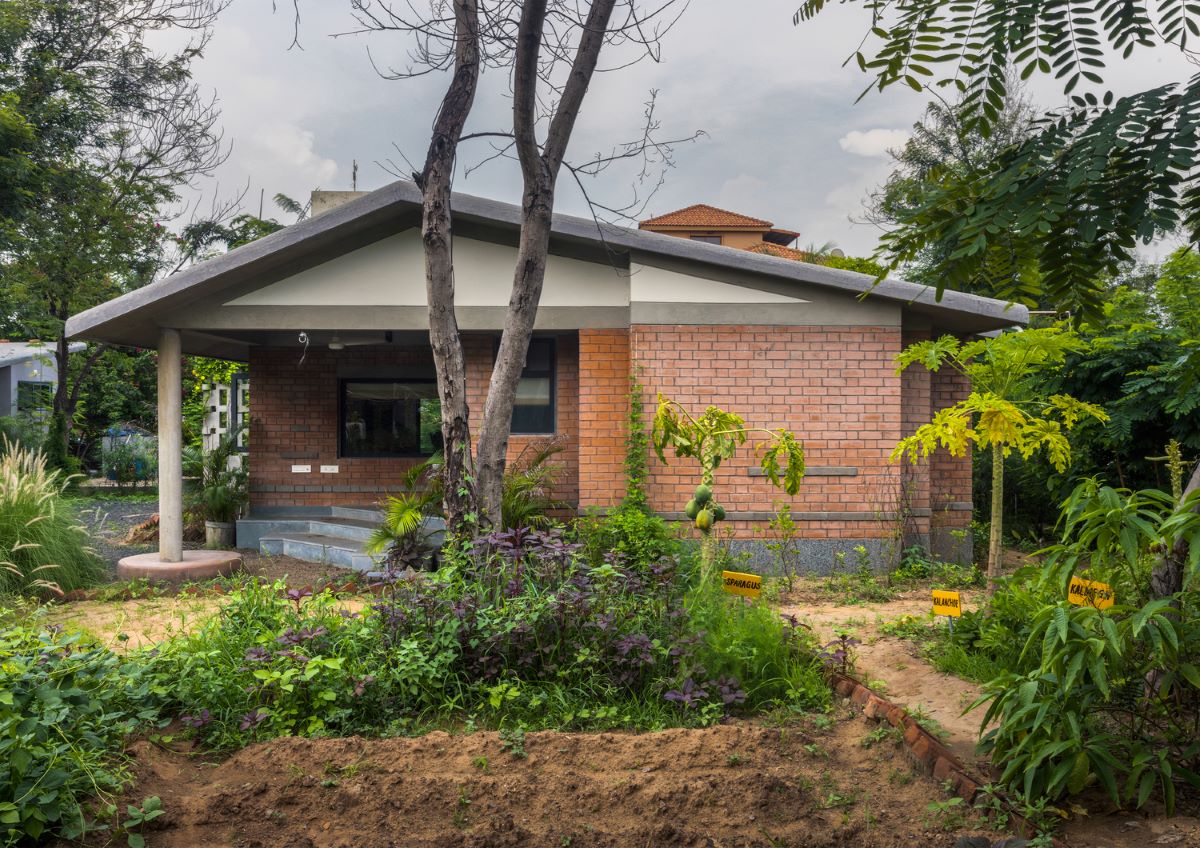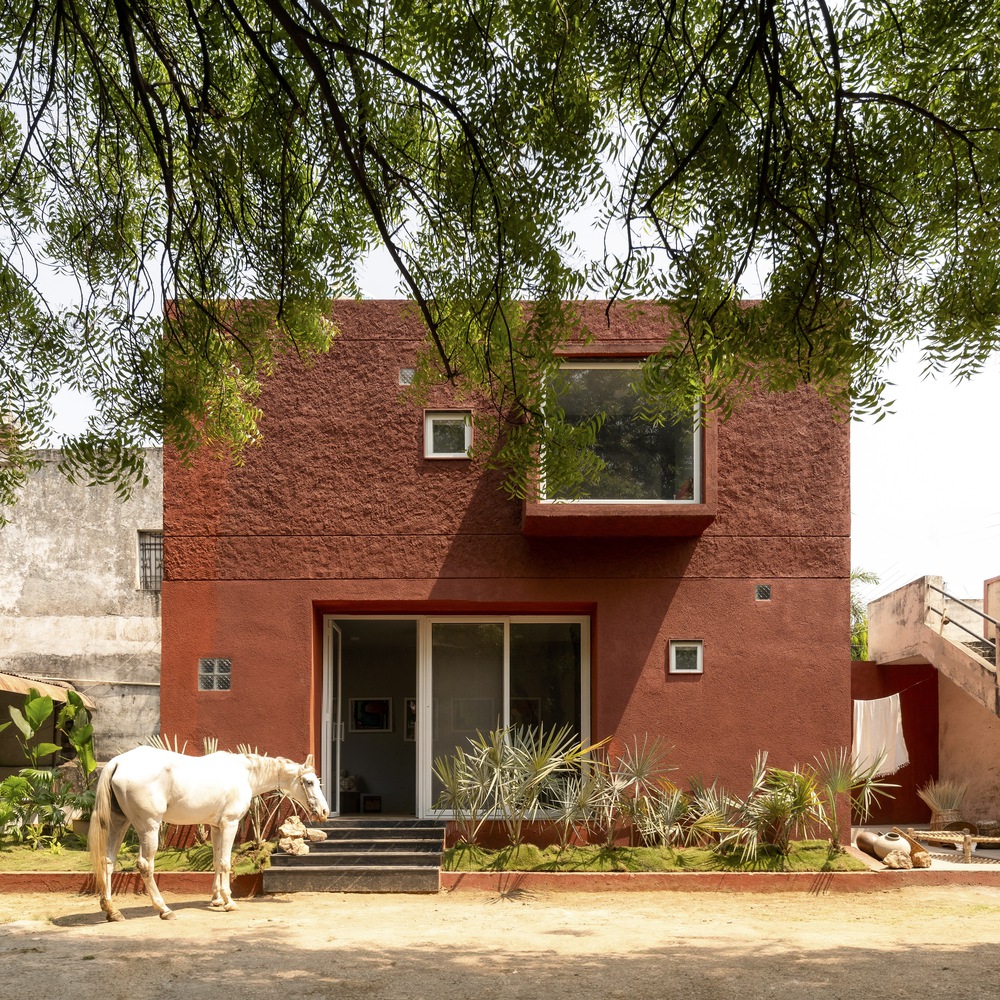
Simple yet bold are not just adjectives that can be used to describe the Lalli residence but also virtues carried over from its client. The plot upon which the residence was built is part of a larger ancestral property to be divided amongst three sisters, leaving the client with a very small rectangular parcel of land.
Though the client’s requirements were straightforward, to begin with, a simple home for a mother & her son equipped with basic amenities, the need for large multi-functional spaces added a curveball that prevented taking on a conventional residential plan. A painter by profession and connoisseur of the arts, the client wanted open spaces that could not only be used as a studio but also to screen films or host exhibitions. To accommodate the need for abundant space within the compact footprint, rigid zoning, and a fixed floor plan were abandoned in favor of a more flexible open layout.
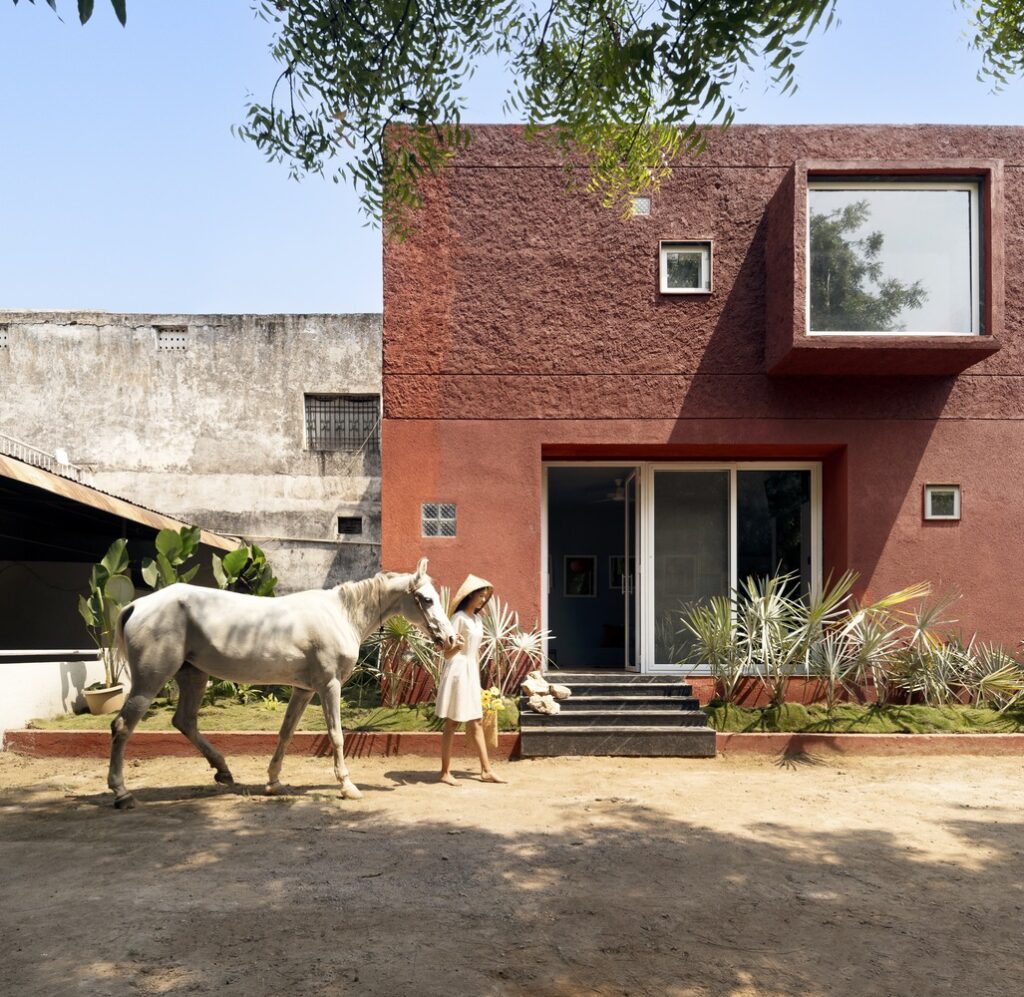

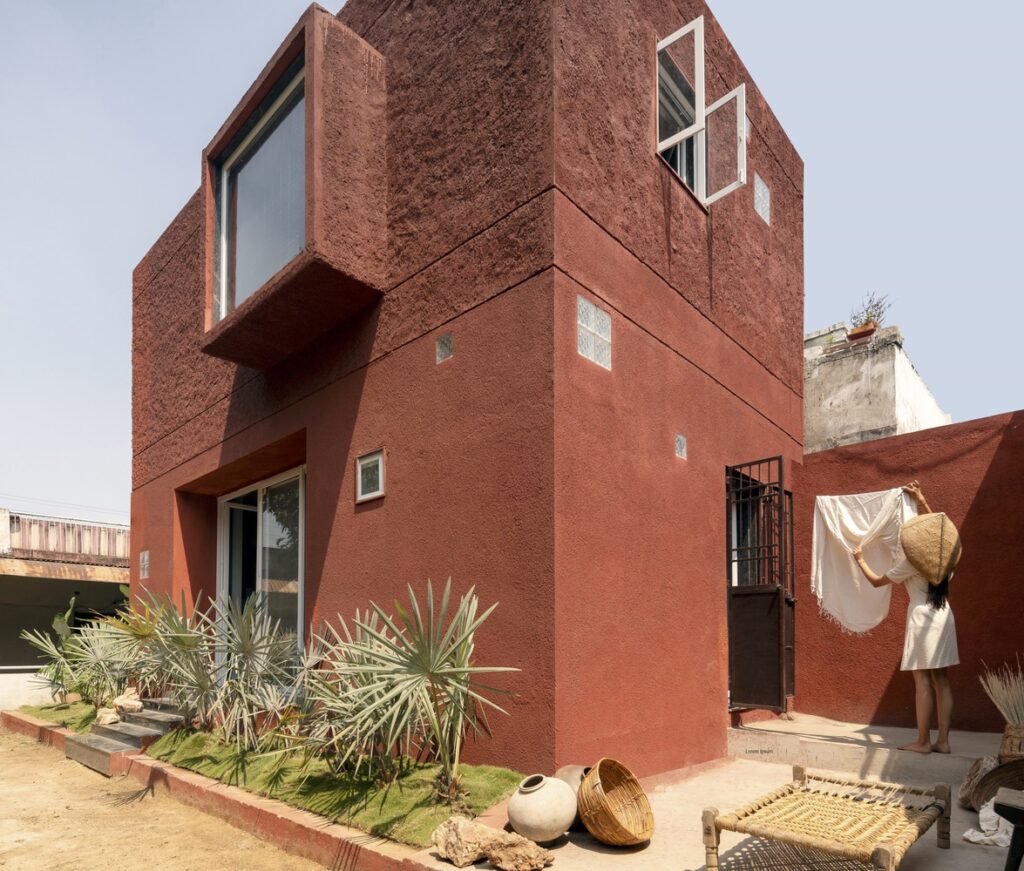
A garden and courtyard on either side of the house act as buffers for a cuboidal form that covers the entirety of available space, chosen to ensure the most efficient usage of the property. Placing the bathroom and kitchen along the narrower southern edge not only minimizes heat gain but also leaves the majority of the ground floor to be used as a foyer cum living area.
Locating within a pre-enclosed property allows for unobstructed large openings on the ground floor. Doing so not only brings in abundant natural light but also drastically opens up the space beyond the confines of its walls. One such opening is a customized window frame below the staircase, creating a pocket in the seating area that directly peers into the garden outside.
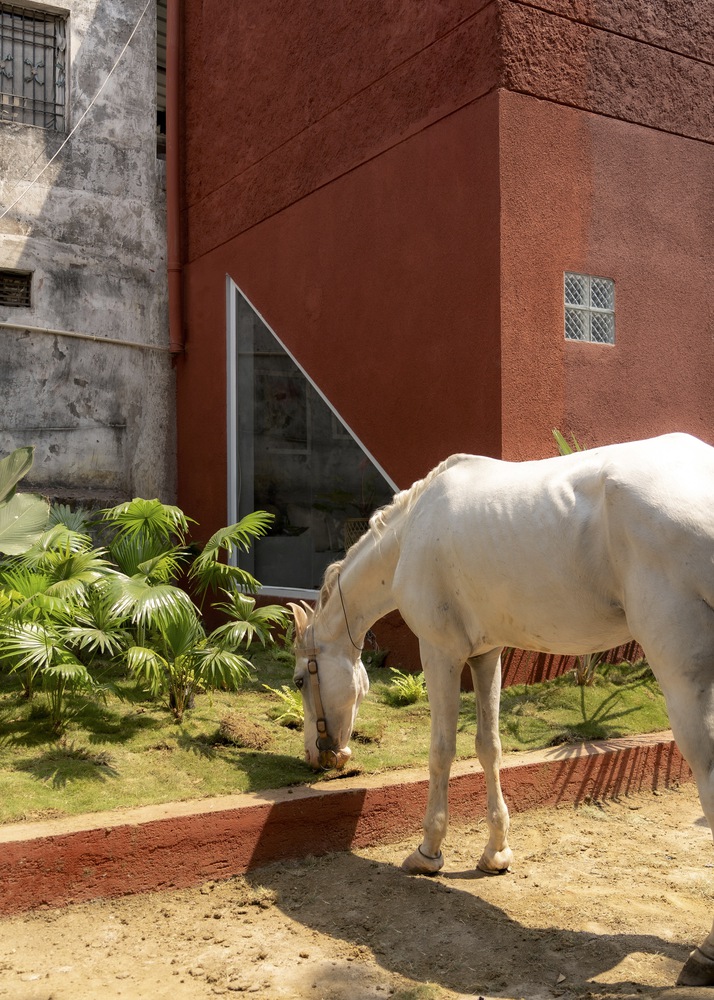


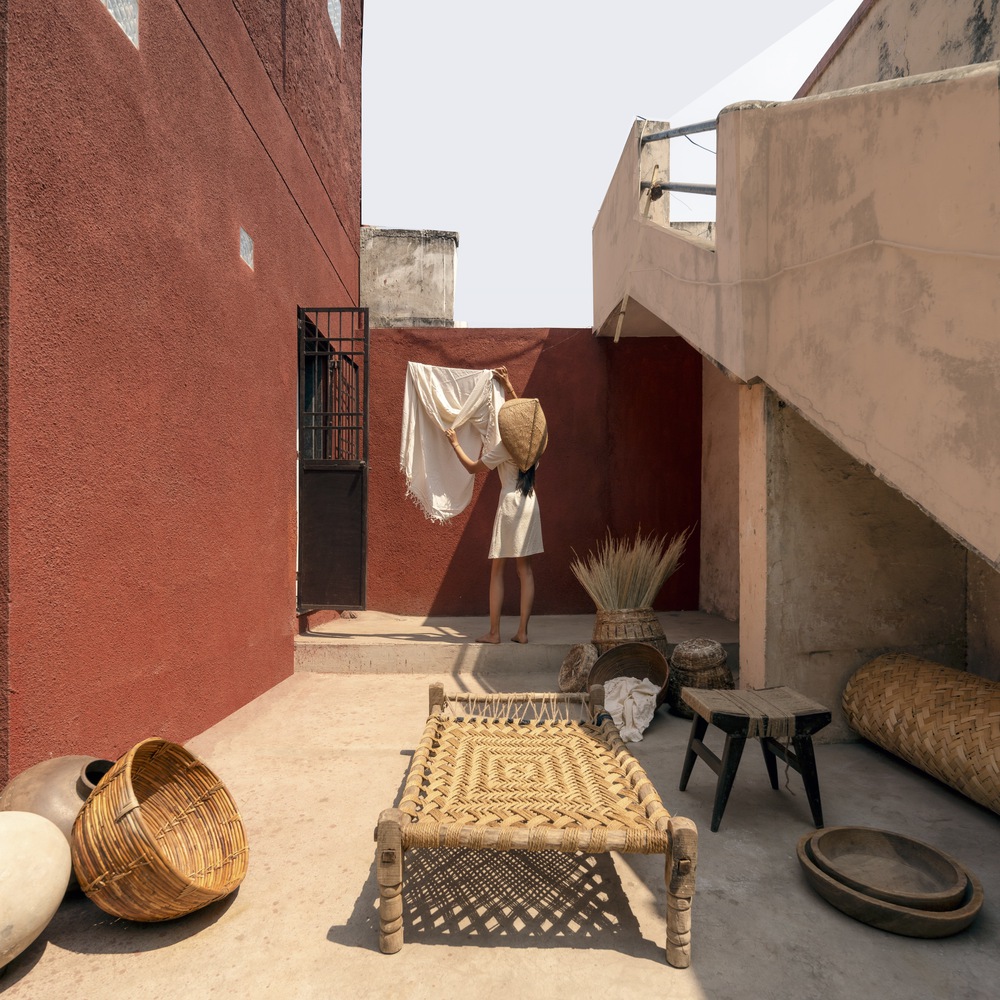
The staircase leading to the upper level is also designed as narrow as possible to minimize its footprint. Ticking off all the basic amenities on the ground floor leaves the first floor completely free, solely for the master bedroom. This was a very intentional decision, taken not only to provide ample room for a painting studio alongside the bedroom but also by opting for a floor mattress that can be moved aside over a stationary cot; the same space then becomes large enough for the client to host her exhibitions and screenings. Incorporating in-built storage into the western wall not only acts as a buffer for the harsh heat from the west but also leaves the floor free while aiding as a display unit during exhibitions.


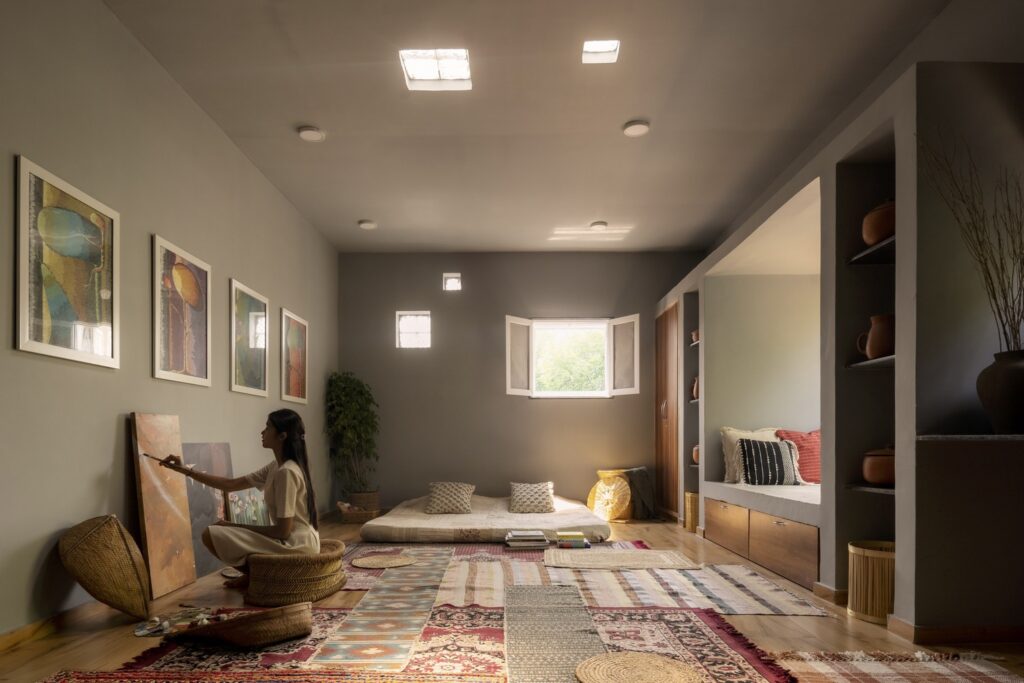
The client’s liking for a neem tree outside the house lends the perfect vista for a cove that protrudes out of the cuboid. The cove features seating with a full-length window shaded by the tree. Additional windows and glass blocks in the ceiling help brighten the space. Due to the taxing spatial requirements limiting drastic experiments to the interior, inspiration is drawn from the client’s name to paint the exterior a sombre red hue through a red oxide plaster, with varying levels of roughness adding further depth by catching the light differently, and a simple groove between the levels to highlight the same.
The Lalli residence reflects what good architecture usually is; it is not always an intervention that will suddenly turn the world right side up, but an expression of the residents and their virtues, thoughtfully designed to make their everyday lives a little better.

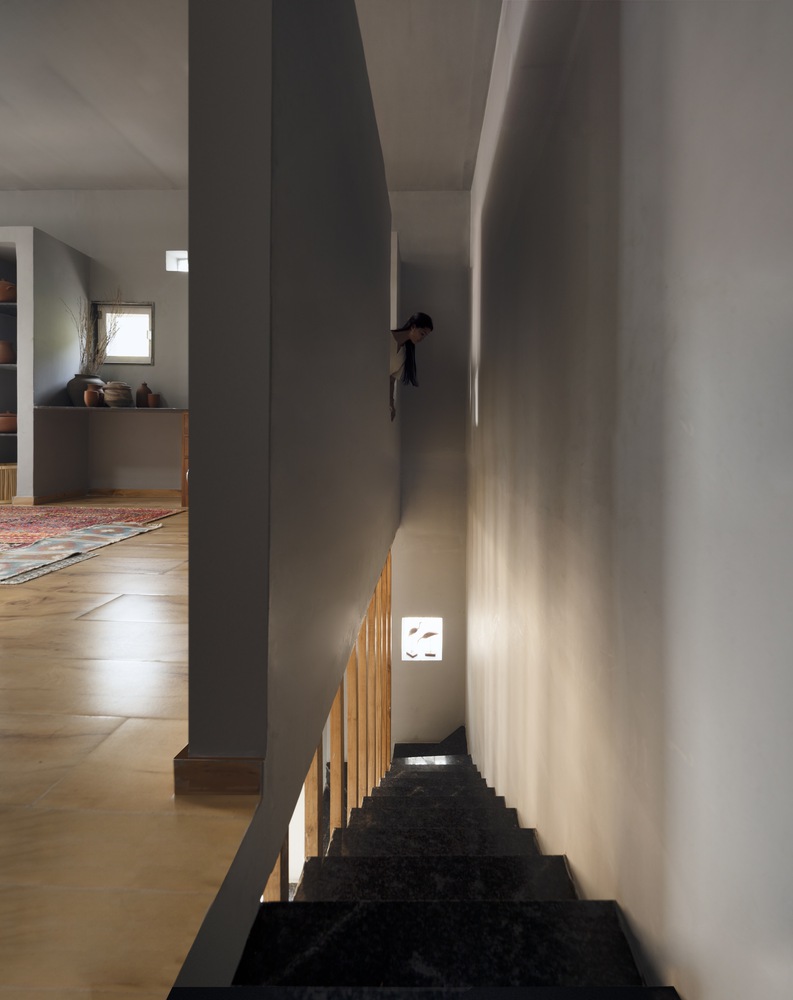
Project Drawings:


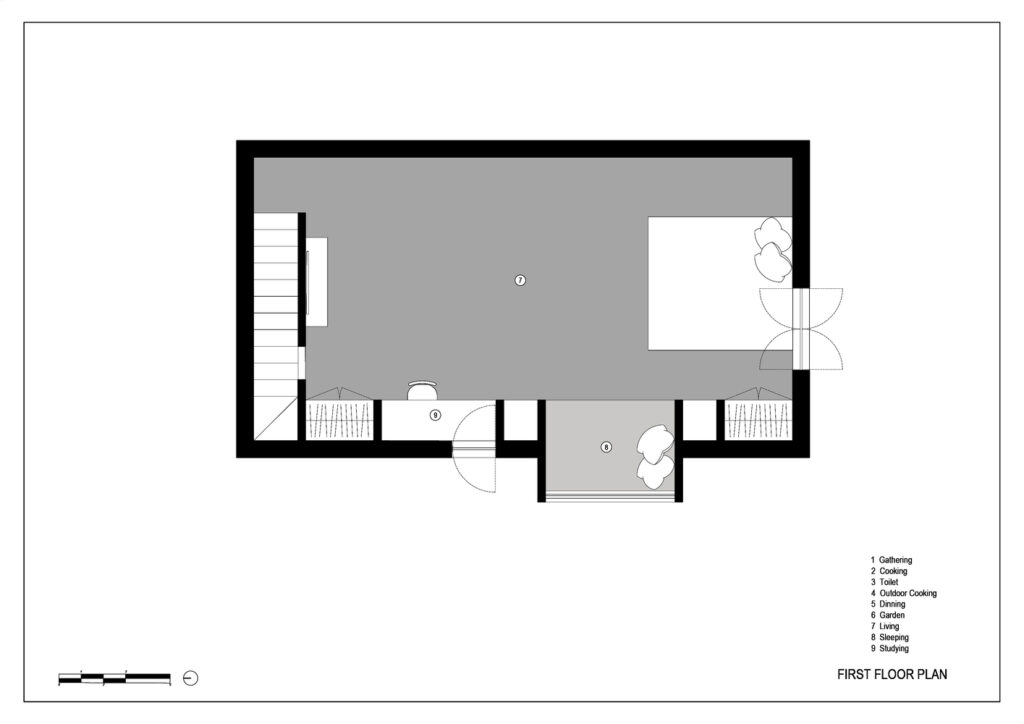

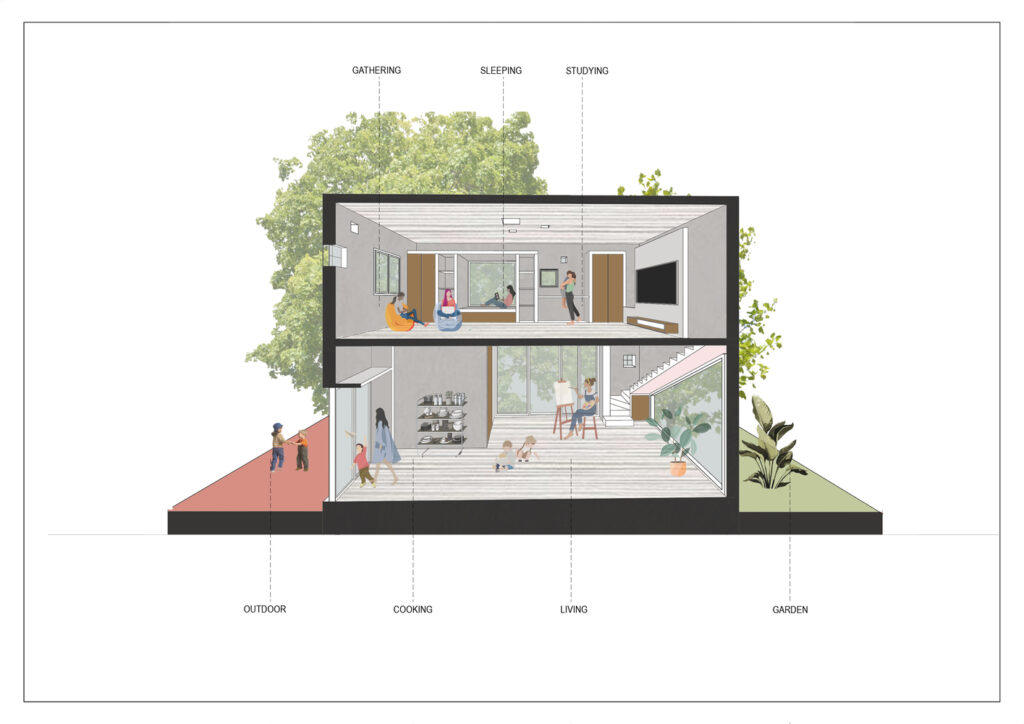

Project Details:
Name: Lalli Residence
Location: Raipur, Chhattisgarh, India
Status: Completed (2024)
Area: 700 sq. ft.
Designed by: My MAATI
Design team: Rishabh Jain, Pragyan Pandey
Consultants:
Construction: Bhavesh Construction, Lalit Sahu
Structure Engineer: Bharat Jain
Styling: Aesthetics and Beyond, Kiran Thadani
Description: Aditya Kadam
Photographs: Yash Raj Jain

